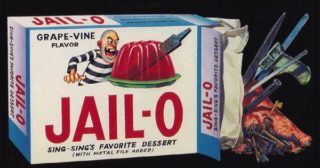
Podcast: Play in new window | Download (Duration: 18:06 — 14.6MB)
Subscribe: Google Podcasts | Spotify | Android | RSS | More
 It is hard to imagine a punishment worse than to have almost no choice of either what you eat or when you eat it, but that’s how life is for most prisoners. Their food choices are made for them, every single day. At the same time, meals are one punctuation mark in what could be a very long sentence. It’s no wonder that food riots are a staple of prison on TV and in the movies, or that food – access to it and control over it – is a crucial aspect of prison life.
It is hard to imagine a punishment worse than to have almost no choice of either what you eat or when you eat it, but that’s how life is for most prisoners. Their food choices are made for them, every single day. At the same time, meals are one punctuation mark in what could be a very long sentence. It’s no wonder that food riots are a staple of prison on TV and in the movies, or that food – access to it and control over it – is a crucial aspect of prison life.
Clair-Woods Brown has embarked on a study of food in prison for a PhD at the University of Glasgow. We talked about the role of food in prison life and the many ways in which prisoners deal with that.
Notes
- I met Clair Woods-Brown at the 1st Biennial Conference on Food and Communication at Queen Margaret University in Edinburgh. My thanks to Dr Ana Tominc and the organisers for allowing me to attend.
- You need to watch the cooking scene from Goodfellas
- Banner photo by Brandon Wong on Unsplash. Cover photo uploaded by Enokson.


